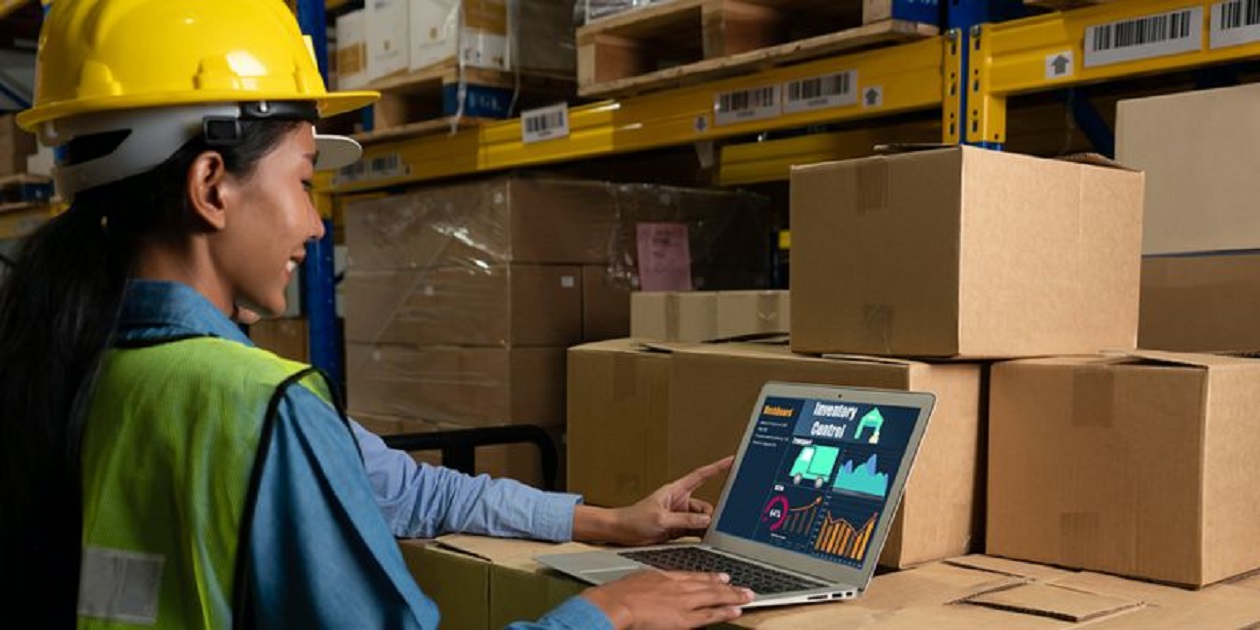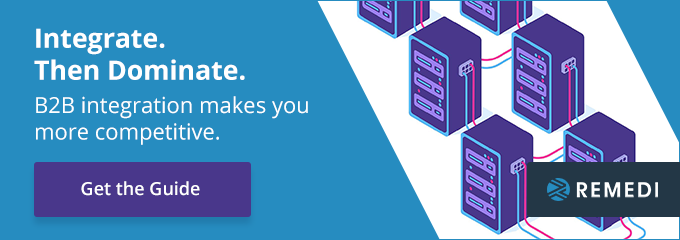
The world is trying to figure out the long-term impact of the COVID-19 pandemic months after its outbreak. Yet, some effects were immediately clear—specifically, supply chain disruptions. These disruptions wreaked havoc on businesses, leaving them reeling and in some cases, struggling to recover.
COVID-19 wasn’t the first event to cause supply chain management challenges, nor will it be the last. Read on to learn how you can prepare for, and navigate, future supply chain management disruptions.
The Supply Chain Management Disruptions of Yesterday That Affect Today and the Future
Below are some of the supply chain management disruptions that COVID-19 wrought, that we’re still dealing with today (and may deal with in the future):
- Facilities shutting down
- Changing consumer demand
- Health and safety issues
- A second wave of the pandemic
Facilities Shutting Down
When Chinese officials realized how quickly the virus spread, they closed down factories and offices across the country. That move had global ramifications: companies with Chinese suppliers couldn’t get the products they needed to manufacture their own items. Moreover, as the virus spread throughout the rest of the world, factories and offices closed down to prevent more people from becoming ill.
As a result, assembly lines essentially ground to a halt. In a July 2020 survey from the Institute of Supply Chain Management, just over three-quarters of respondents reported reduced revenue targets of 23% on average.
Changing Consumer Demand
Another massive supply chain management disruption was the change in consumer demand, which was influenced by factories and offices shutting down. These shutdowns led to consumers’ concern about the availability of everyday items, especially staples such as toilet paper. Because people were staying home more, they also baked more, which led to an increase in people buying ingredients such as flour and yeast.
Months later, manufacturers were still adjusting to the shifts. In a summer 2020 earnings call, Clorox executives admitted that it could take the company a full year to bring supply levels where they need to be.
Health and Safety Issues
Health and safety issues have manifested themselves in a few ways in supply chain management. For a start, there was the initial PPE shortage, which had devastating effects around the world. As scientists learned more about the virus, they began advocating for mask wearing (which also changed consumer demand).
Within the manufacturing space, health and safety issues took on a new importance. As workers fell ill, many factories shut down, causing supply chain delays (another factor in changing consumer demand, as COVID-19 outbreaks at meat processing plants led to shoppers not being able to get meat, or avoiding it for fear of falling ill).
A Second Wave of the Pandemic
We won’t delve into the reasons why a second wave of COVID-19 is predicted to sweep across the world; what we will do is talk about its potential impact on the supply chain.
A second wave of the pandemic could cause:
- More factory and office shutdowns
- Further changes in consumer demand
- Additional health and safety issues
Most importantly, it will further weaken an already battered supply chain, which is still struggling to recover from the first wave of COVID-19.
What Can Companies Do to Mitigate Supply Chain Management Challenges?
The supply chain management challenges that arose due to the outbreak of COVID-19 will continue to affect the supply chain for the foreseeable future (and potentially beyond that). However, those might not be the only challenges that will come up; if 2020 has shown us anything, it’s that natural and man-made disasters can erupt at a startling pace.
How can companies mitigate the aforementioned supply chain management issues, as well as others that no one has yet predicted? The answer lies in:
- Greater visibility
- Sharing information in a timely manner
- Having a strong ecosystem
- Greater agility
How do you achieve all of these things? The answer lies in B2B integration.
B2B Integration: Helping Mitigate Supply Chain Management Challenges
B2B integration solutions support a variety of integration tools, including EDI and file exchange. With a B2B integration solution, you can see all of your supply chain data in one place.
In the following sections, we’ll explore how B2B integration gives you greater visibility, allows you to share information in a timely manner, creates a strong ecosystem, and boosts your agility.
B2B Integration and Greater Visibility
As we mentioned in the previous section, B2B integration allows you to centralize your supply chain data in one place. That, in turn, increases your visibility.
How can greater visibility mitigate supply chain management challenges? We’ll use the example of an epidemic, which may be less deadly than a pandemic, but can still severely impact the supply chain. Let’s say there’s a cholera epidemic in the town where your textile factory is located. B2B integration software can show you that there’s a potential factory shutdown, so you have the time to shift production somewhere else.

B2B Integration and Better Information Sharing
Another way in which B2B integration mitigates supply chain management challenges is by enhancing information sharing. What does that mean, and what does it look like?
Most people in business are aware of the existence of data silos—those closed-off collections of information that don’t help anyone because the data therein is inaccessible. With data silos, vital information doesn’t get shared.
“B2B integration mitigates supply chain management challenges by enhancing information sharing.”
B2B integration makes it easier to share information. We’ll use the advance ship notice as an example: Let’s say the Thomas Company is shipping ball bearings to Applewood Inc. The Thomas Company’s B2B integration solution automatically creates an ASN and transmits it electronically to Applewood’s B2B integration software, so Applewood’s warehouse staff can prepare themselves to receive the shipment.
The advanced notification that the ASN provides means that Applewood’s warehouse staff aren’t scrambling at the last minute to handle a shipment, which saves the firm time and money (and stress). Because the ASN is automated, it’s accurate—the B2B integration solution pulls information straight from systems of record, so there’s no need for manual data. It’s a much better method of sharing data, as you never have to worry if there are mistakes.
Having a Strong Ecosystem
The companies that were able to weather the pandemic had a strong digital infrastructure in place—popular examples are Amazon and Apple, whose stock prices soared as consumers flocked to them. If you’re not an Amazon or an Apple, that doesn’t mean that you can’t weather another supply chain management challenge, though—it just means you need an ecosystem of partners upon whom to depend.
We’ll use an example from the pandemic to illustrate this point. Over 200 of the Fortune 500 companies have a direct presence in Wuhan, China, the city in which the virus originated, while 163 of the Fortune 1000 have Tier 1 suppliers there (and 938 have one or more Tier 2 suppliers). Moreover, Wuhan is home to the largest inland port in China, making it a critical transportation hub. When the virus struck, thousands of companies were affected.
“Managing supply chain challenges involves having a strong partner ecosystem.”
What does B2B integration have to do with creating a strong partner ecosystem? B2B integration solutions can integrate with cutting-edge technologies that can keep you aware of developments in the supply chain (such as factory shutdowns), and help you find alternate trading partners to shift the load.
A strong ecosystem means that if one of your top-tier suppliers can’t fill an order, you have somewhere else to turn. You’re not dependent on one supplier for all of your needs (which also makes your firm more resilient and sustainable).
Greater Agility
One of the most important qualities that companies need to have to successfully mitigate future supply chain management issues is agility. Supply chain agility means that you’re able to quickly adjust tactics and operations within the supply chain.
David Gligor, Ph.D., an associate professor in the marketing department at the University of Mississippi, identified five dimensions of supply chain agility. B2B integration can help you achieve these five dimensions.
- Alertness: the ability to quickly detect changes and threats. Because B2B integration solutions give you greater visibility and allow you to easily share information, you can be more alert to changes in the supply chain.
- Accessibility: the ability to access relevant data. B2B integration solutions centralize your data, so that you can find the information you need quickly.
- Decisiveness: the ability to make resolute decisions. With B2B integration solutions, you can make decisions based on accurate, timely data, so you know it’s the right choice.
- Swiftness: the ability to implement decisions quickly. B2B integration solutions can provide real-time data, so you can make the right decision faster.
- Flexibility: the ability to modify tactics and operations so a company can implement its strategy. With B2B integration solutions, companies have the information they need to be flexible and make changes when needed to survive.
We don’t know where the next supply chain management threat will come from, let alone what it will be. It could be connected to COVID-19, or it might not. What matters is that you have the tools in place to mitigate the risks it poses. Integrate. Then Dominate.




